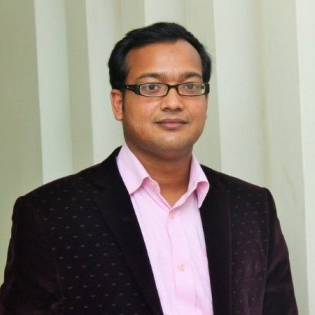Technological Advancements for Global Energy Sustainability: Role of Energy Storage, Power Converter, and Control
A special issue of Sustainability (ISSN 2071-1050). This special issue belongs to the section "Energy Sustainability".
Deadline for manuscript submissions: closed (31 March 2022) | Viewed by 26661
Special Issue Editors
Interests: renewable energy technologies; power electronics; electrical machines; smart grids; power quality; electrical vehicles
Special Issues, Collections and Topics in MDPI journals
Interests: renewable energy resources; optimization algorithms; energy storage systems; electric vehicles; smart grid
Special Issues, Collections and Topics in MDPI journals
Interests: renewable energy; micro-grid; control; optimization techniques; energy storage systems; and electric vehicles
Special Issues, Collections and Topics in MDPI journals
Special Issue Information
Dear Colleagues,
The role of energy storage systems (ESS) is important in the current landscape of renewable energy generation and electric vehicles. An ESS is incapable of having both high power and high energy density and this has led to the inception of hybrid energy storage systems (HESS). This idea of exploiting the complementary characteristics of ESS offers a technical and economic advantage over the use of a single ESS. This hybridization introduces multidisciplinary research challenges. The current trend of research focuses on the sizing of ESS, devising advanced control and energy management strategies, and developing efficient power electronic converters and their advanced switching and control for applications in renewable power generation and the transportation sectors. This Special Issue will focus on the recent technological advancements in the power and energy sector to accommodate the large penetration of renewable energy resources and electric vehicles. Further, it focused on new products in the microgrid/smart grid/future grid environment, storage systems, renewable energy technologies including solar, wind, and ocean wave, novel concepts, and their applications. Energy efficiency, system integration, system reliability and sustainability, fault mitigation, and optimization and control techniques are among the areas of interest.
Dr. Md Rabiul Islam
Dr. Thanikanti Sudhakar Babu
Dr. Sajal K. Das
Guest Editors
Manuscript Submission Information
Manuscripts should be submitted online at www.mdpi.com by registering and logging in to this website. Once you are registered, click here to go to the submission form. Manuscripts can be submitted until the deadline. All submissions that pass pre-check are peer-reviewed. Accepted papers will be published continuously in the journal (as soon as accepted) and will be listed together on the special issue website. Research articles, review articles as well as short communications are invited. For planned papers, a title and short abstract (about 100 words) can be sent to the Editorial Office for announcement on this website.
Submitted manuscripts should not have been published previously, nor be under consideration for publication elsewhere (except conference proceedings papers). All manuscripts are thoroughly refereed through a single-blind peer-review process. A guide for authors and other relevant information for submission of manuscripts is available on the Instructions for Authors page. Sustainability is an international peer-reviewed open access semimonthly journal published by MDPI.
Please visit the Instructions for Authors page before submitting a manuscript. The Article Processing Charge (APC) for publication in this open access journal is 2400 CHF (Swiss Francs). Submitted papers should be well formatted and use good English. Authors may use MDPI's English editing service prior to publication or during author revisions.
Keywords
- Advanced control strategies for power-sharing in microgrids and electric vehicles
- Application of heuristics and meta-heuristics algorithms for efficient control of HESS
- Optimal sizing algorithms, along with power management strategies
- Techno-economic analysis of HESS
- Lifecycle modeling and assessment of HESS
- Modeling and stability analysis of HESS in microgrids
- New combinations of advanced ESS to form HESS
- Role of HESS in microgrids
- Design, modeling, simulation, and application of HESS in electric vehicles (personal and commercial)
- G2V, V2V, and V2G technologies
- Microgrid: modeling, control, and protection techniques
- Power converter topologies and associated control and modulation techniques
- Robust and efficient power converter configurations
- Fault detection and diagnosis of DC distribution
- Energy management strategies, involving hybrid energy storage in microgrids
- New technologies in DC lighting systems
- Modeling and power extraction enhancement techniques for solar, wind, ocean wave, and fuel cell resources
- Artificial intelligence and machine learning methods in the design and control of microgrids
Benefits of Publishing in a Special Issue
- Ease of navigation: Grouping papers by topic helps scholars navigate broad scope journals more efficiently.
- Greater discoverability: Special Issues support the reach and impact of scientific research. Articles in Special Issues are more discoverable and cited more frequently.
- Expansion of research network: Special Issues facilitate connections among authors, fostering scientific collaborations.
- External promotion: Articles in Special Issues are often promoted through the journal's social media, increasing their visibility.
- Reprint: MDPI Books provides the opportunity to republish successful Special Issues in book format, both online and in print.
Further information on MDPI's Special Issue policies can be found here.







